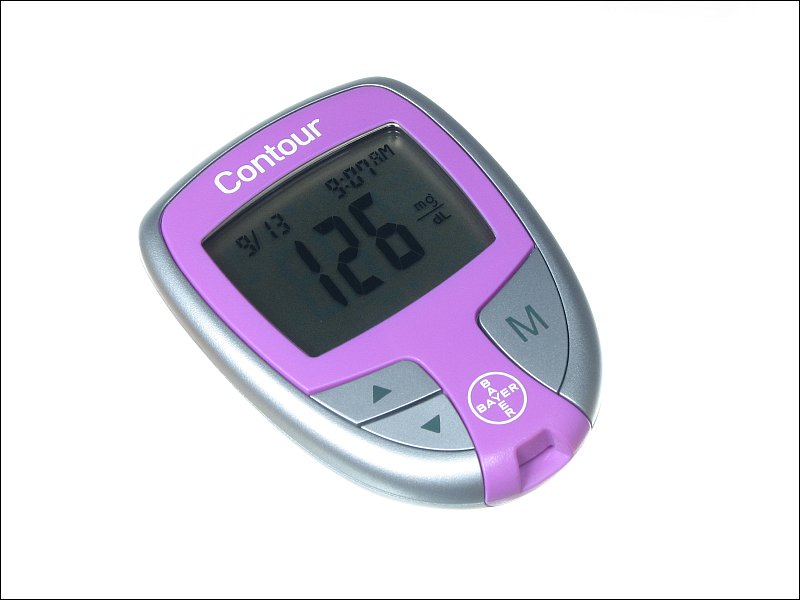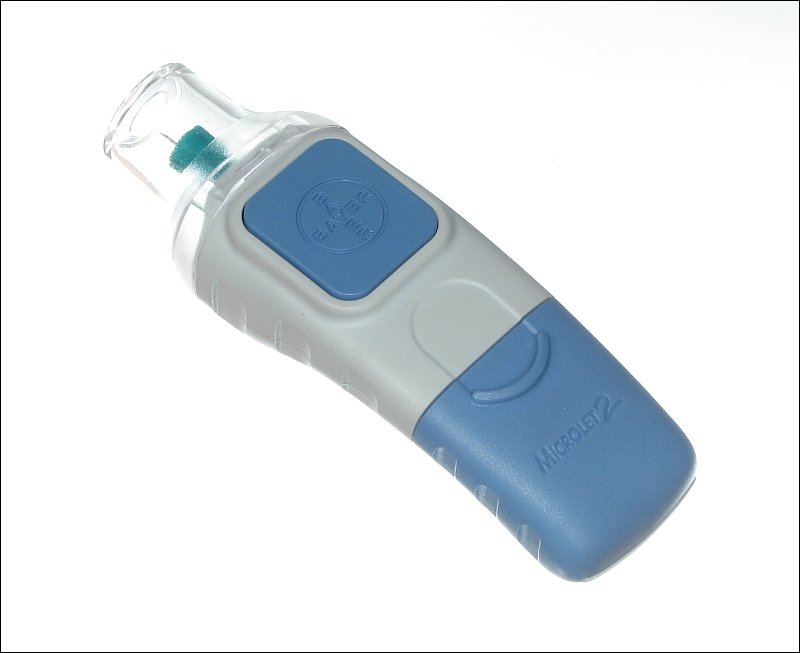Diabetes Mellitus - or Simply Diabetes
Foreword:
Before you read any further, you should know that I have absolutely ZERO medical training. The information here is from my experience. This should NOT be your only source of information on this subject. If you find that something here is wrong or misleading, please email me.
Overview:
If you have a family history of diabetes and haven't educated yourself on the disease, this should be of interest to you. There are two types of diabetes, type 1 and type 2. This page will mainly address type 2. Type 1 is insulin dependent diabetes. Those with type 1 have to use insulin (injected with either a syringe or an infusion pump) to control their blood glucose levels. People with type 1 diabetes are generally born with it or have had problems with their pancreas (the pancreas produces insulin when working properly).
A few basic definitions
Glucose:
The sugar that your body uses/produces to fuel your muscles and provide energy.
Insulin:
A hormone that's responsible getting the glucose from your blood to your muscles and other cells where they can be used.
Type 2 diabetes is sometimes referred to as adult onset diabetes. People with type 2 diabetes produce insulin but their blood glucose (sugar) levels are not well controlled. As they age, the control becomes worse if it's not treated. It seems (from what I've read) that most people with type 2 diabetes produce sufficient quantities of insulin but their cells are insulin resistant. This means that, with normal insulin levels, the glucose won't efficiently pass into the cells and the blood glucose levels become too high.
Damage:
High blood glucose levels can cause significant damage to the body. The higher the blood glucose levels, the greater the risk of damage. With long term high blood glucose levels, you will have a higher risk of heart disease, cardiovascular disease and nerve damage (all are very difficult, if not impossible to reverse).
Symptoms:
Some of the relatively early symptoms are unexplained weight loss, being extremely thirsty and having to urinate frequently. Extreme thirst can be masked as something else. Before I was diagnosed, I thought that I simply REALLY loved Diet Mountain Dew. I would drink a 12-pack daily and couldn't seem to get enough. It didn't seem that I was really thirsty. It really did seem like the Mountain Dew was that good. After getting on the proper prescription drugs, the desire to drink that much was gone.
Symptoms for those that have had uncontrolled blood glucose levels for an extended period of time can be numbness or tingling in the extremities (generally in the feet/toes initially). This is caused by nerve damage. As the damage becomes worse, the numbness will become severe enough so that you will not notice injuries or infections. Since diabetes also damages blood vessels in the area, these cannot heal as they normally would. This is the reason that amputations are often associated with diabetes. The following link shows what can happen if diabetes is not well controlled. Do NOT click the link if you have a weak stomach.
Click Here
The people in the images returned by the search above have likely had the disease for many years. Some people don't want to know if they are diabetic. They just want to assume that everything is OK. If you are diabetic and you don't treat it, it can result in damage like that seen in those search results. Initial treatment can be as simple as taking a few pills and changing the way you eat. Don't put off testing if you have a family history of diabetes.
Blood Glucose Levels:
There are (at least) two ways of expressing blood glucose levels. The most common here (in the US) is mg/dl (milligrams per deciliter). For people who are not diabetics, their blood glucose levels will remain in the range of ~80-120mg/dl. After a large meal, it may go up to 150 or even 200mg/dl but it quickly (within a couple of hours) drops back down to something near 120mg/dl. In those with type 2 diabetes, the same meal can drive blood glucose levels to over 400 and it takes significantly longer to come back down. As the disease gets worse, the blood glucose levels never drop back down to 'safe' levels. This is especially true for those who are over-weight.
Initial Tests:
Many times, the first tests performed are the fasting blood glucose tests. This tests your blood glucose levels 8 or more hours after your last meal. Many times, the doctors will schedule the tests early in the morning so that you won't have to wait so long after waking, to eat. Generally, if the levels are near 120-140mg/dl, the doctor won't do anything. If it's above ~140mg/dl, it's likely that they'll suggest changing your diet, losing weight and getting more exercise. These numbers for the various thresholds (non-diabetic/diabetic) have changed over the years. It used to be that anything under 150mg/dl was considered OK. Now, they've lowered the safe level to under 126mg/dl. Some doctors recommend even lower levels.
If your doctor wants to see how your body reacts to glucose, you may be given a glucose tolerance test. Your blood glucose is measured before and after you drink a glucose solution. Blood glucose it typically measured at 1/2, 1, 2 and 4 hours (some tests are only for 2 hours) after drinking the glucose solution. The blood glucose levels will typically spike but will come down quickly for those without diabetes.
Another test is the hemoglobin A1c test. The blood glucose level tests previously mentioned, really only give you a snapshot of the blood glucose levels. If you only took one such test and it was ~1 hour after eating a meal rich in refined sugar, you may think you have diabetes due to the spike in blood glucose levels. The A1c test gives and indication of the control of blood glucose levels over a much longer period of time (~3 months). Generally, a healthy person will have an A1c below 7. In people with uncontrolled diabetes, the numbers may be significantly higher. Higher numbers in the A1c test are a good indicator that you're doing damage to your body.
Early Treatment:
If diet, exercise and weight loss aren't enough, one of the first lines of defence is metformin (also commonly sold under the trade name Glucophage). This drug does 3 basic things. First, it reduces insulin resistance which helps the glucose to transition from the blood to the cells that need it. This helps reduce blood glucose levels. It also slows down the production of glucose by the liver. Lastly, it helps to prevent the digestive system from absorbing sugars.
Types of Sugars (carbohydrates):
You may or may not realize but many food items contribute to high glucose levels. A potato or pasta may not taste sweet but eating 1 cup (8 oz) of either is roughly equal to eating a 1/4 cup of cane sugar. Refined sugars/carbs are converted very quickly by the body and tend to cause a spike in blood glucose levels. Whole grains will cause a less significant spike but will still contribute significantly to blood glucose levels. Diabetics have to be very careful in what they eat, particularly when eating anything produced from corn, wheat, rice or potatoes.
Glycemic Index:
The glycemic index of foods tells you how the body reacts to the food (relative to how it reacts to glucose). High GI foods (rice, potatoes, flour...) cause significant spikes in blood glucose levels. Low GI foods (green vegetables, cauliflower, mushrooms...) have little effect on blood glucose levels. Meats, cheeses and fish have little effect on blood glucose levels. Any increase will be delayed.
Glycemic Load:
The glycemic load tells you how much of a glucose load the food will present to your system. It's determined by portion size. A small portion of a food with a high GI is roughly equal to a larger quantity of food with a lower GI.
Meals for Diabetics:
In general, diabetics can eat anything but they have to be careful not to eat too much of the wrong things. A good meal is one that will provide a long term, level supply of glucose. It will contain foods with a high GI as well as a low GI. For example, it will contain grains to give energy relatively quickly as well as meats/cheeses that will take longer to digest and be converted to sugar by the body. The following Google search will give you several sites that offer meal suggestions.
Click Here
Testing on Your Own:
If you have a family history of diabetes and don't want to go to the doctor, find a family member (or friend) with a blood glucose monitor and test yourself. I'd suggest that the initial test be done after fasting (no food or drink other than water for 8 hours - best done just after you wake up in the morning). The family member with the meter can very likely answer your questions about the test results. Keep in mind that the test supplies aren't cheap. If you test repeatedly, offer to pay the family member for the supplies. You can also buy meters on eBay for about $15 and it will include 10 test strips. If you buy one, try to buy one that states that 'coding' isn't required. Coding is the process of matching the strips to the meter (strips vary slightly from one production batch to another). it's not difficult but why buy a meter that requires coding if you can get one that doesn't require it. Below is one example of a blood glucose meter. You insert the strip into the slot in the bottom of the meter.

The test involves obtaining a small blood sample by using a lancing device. Before using the lancing device (one example shown below), change the lancet. Also replace the lancet AFTER obtaining the sample so that there is no possibility of passing any infection to anyone else who may use the meter. Wash and dry your hands thoroughly before obtaining the blood sample. Wiping the area with alcohol is generally recommended. The sample is applied to a test strip thats inserted into a blood glucose monitor/meter. The meter analyzes the sample and gives a digital readout of the blood glucose levels.

Remember, diabetes can sneak up on you. If you have a family history of diabetes or are overweight, don't wait until you have symptoms to go to the doctor or to be tested. The damage is cumulative and can easily result in blindness or amputations if you're a diabetic and you don't control your blood sugar.
Other Sources of Information:
American Diabetes Association
WebMD
Mayo Clinic
Wikipedia
Back to the Top



